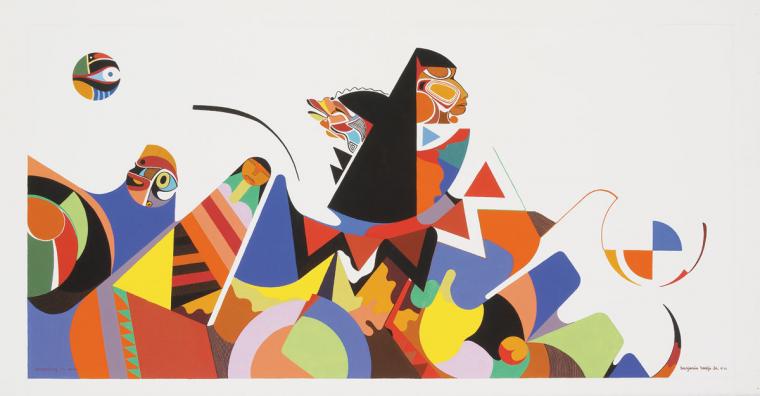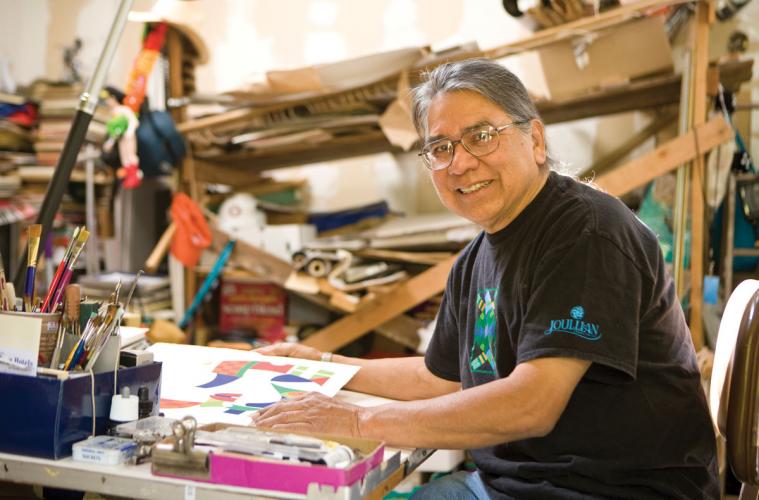This past May, the art world lost one of its most colorful masters. Benjamin Harjo Jr. (Absentee Shawnee/Seminole of Oklahoma) was known for his innovative use of abstract design and vibrant hues.
Harjo graduated from the Institute of American Indian Arts in 1968 and then enrolled at Oklahoma State University (OSU) to pursue a Bachelor of Fine Arts. The Vietnam War interrupted his plans, however. He was drafted into the U.S. Army in 1969 and served for three years.
When he returned to OSU to complete his degree, “He was hungry to get on with his life,” said his art professor Marty Avrett. “He was serious about his painting. But he would also recognize it as being playful and do whimsical things in his works.”
Indeed, his paintings such as “Dreaming in Color” in the National Museum of the American Indian collection have an energy created by the interplay between vibrant blocks of color, hard lines and abstract figures that seems to propel these visual jigsaw puzzles through their stark backgrounds. Even the myriad of two-dimensional shapes that make up the figures in his black and white drawings appear to move as you gaze at them. The effect, said Avrett, is “flat shapes that dance across the canvas.”
The artist’s colorful palette and vibrant geometric patterns evoke Seminole patchwork traditions that he then transformed into something distinctly his own. Native American figures often were the centerpiece in his art. His connection to his American Indian heritage was the “thread woven through all of those decades of work,” Avrett said. Yet, “In the end, during his past 15 or 20 years or so, his style was recognizable. ... It was transcendent.”
Harjo earned numerous honors for his work, including Featured Artist at the National Museum of the American Indian’s Aspen Benefit in 1992 and 1993, the 1993 Heard Museum’s 34th Annual Featured Artist award and Best of Division and First Place at the 2009 Santa Fe Indian Market. Harjo and his wife, Barbara, also served on the Art Advisory Council that helped establish the OSU Museum of Art in 2011.
Since his death at the age of 77, many have reflected on not only Harjo’s legacy but also his kindness and generosity. Avrett said of his friend, “He had a wonderful sense of humor. He was always laughing.”


